How To Use Wasabi Hot Cloud Storage for DPX vPlus Backup Storage
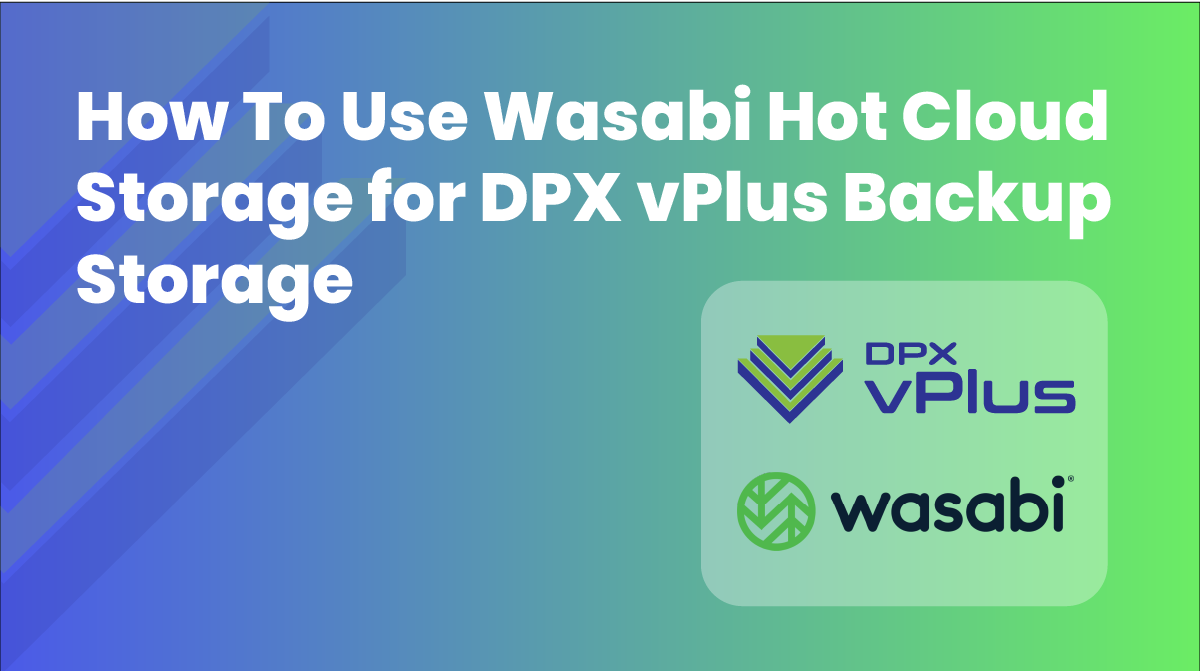
DPX vPlus is an enterprise-ready, agentless backup and snapshot management solution for Microsoft 365 and virtual environments. It allows you to reliably improve and automate backup performance, automate recovery tests, and significantly save resources, time, and money. Microsoft 365 backups and virtual machines backups can be stored on-premises, on a local file system or share, or can be stored in the cloud using cloud storage. Wasabi backup storage delivers fast to write, low cost, and reliable cloud object storage, that also provides faster speeds than Amazon S3. Wasabi backup storage charges no egress fees, and provides 100% data immutability, so you can be confident that your backup data is tamper-proof.
This article provides the steps to use Wasabi cloud storage as DPX vPlus backup storage.
Configuration Pre-Requisites
- DPX vPlus version 5.0 or higher
- Active Wasabi account with access to Wasabi console
Reference Architecture Diagram
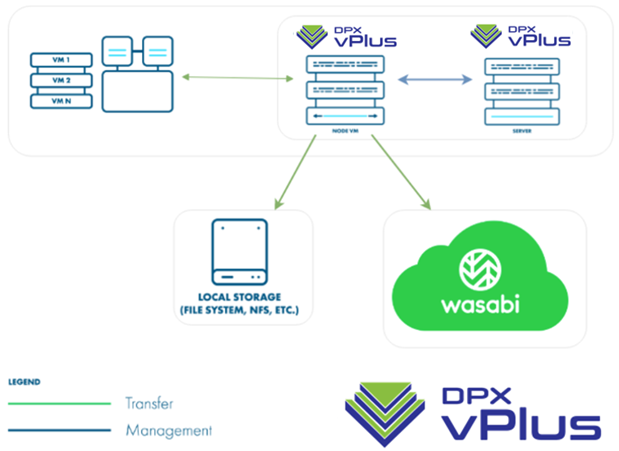
Wasabi Configuration
1. Login to Wasabi console and Click on “Create Bucket” to create a new standard bucket. Please refer to Creating a Wasabi bucket for information to create a bucket.

2. Create an Access key and Secret key for the root user. Make sure to download the key file in order to retrieve your secret key again.

DPX vPlus Configuration
Follow the below steps to configure DPX vPlus to use Wasabi backup storage:
1. Log in to the DPX vPlus web UI
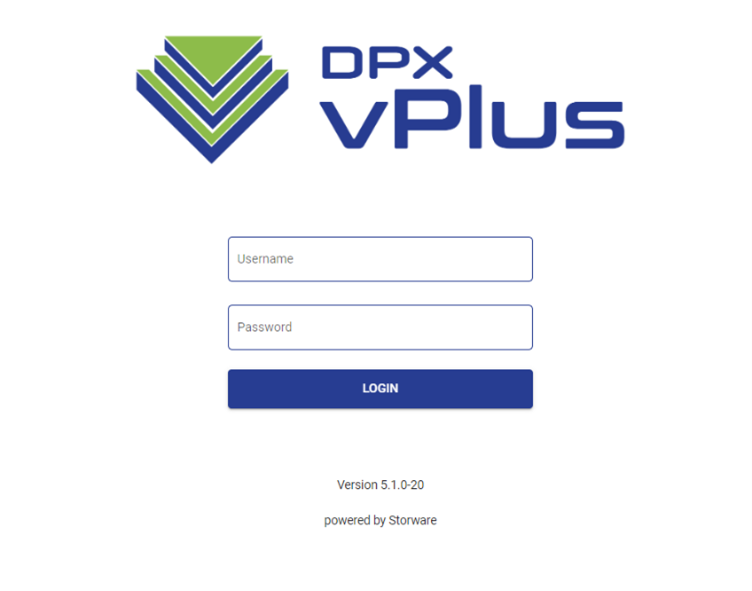
2. Navigate to the Backup Destinations Tab -> Object Storage. Then click on “Create Backup Destination” and select “Amazon S3 / S3-compatible.”
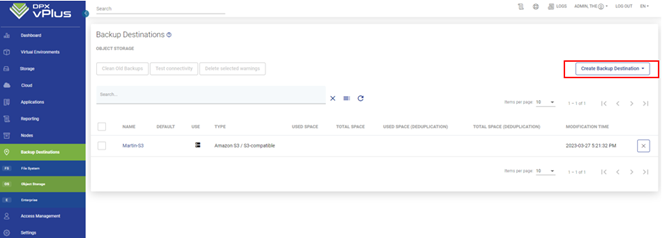
3. In the Create Backup Destination window, input the name for your backup destination and choose the node configurations as needed.
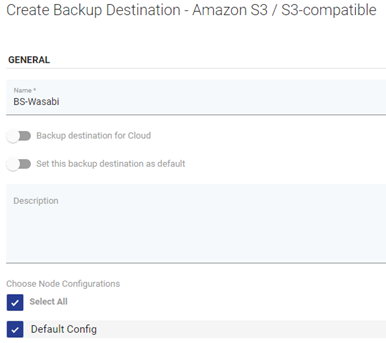
4. In Amazon S3 / S3-Compatible Settings, provide the information about your bucket
- API URL – This is the URL for the Wasabi region. Please refer to Service URLs for various Wasabi regions.
- Backup mode – select your option
- Bucket name – this is the bucket that was created in section 3 above
- Region – Region for Wasabi bucket. Please refer to Service URLs for various Wasabi regions.
Make sure the flags “Path style access enabled” and “Parallel Download enabled” are enabled.
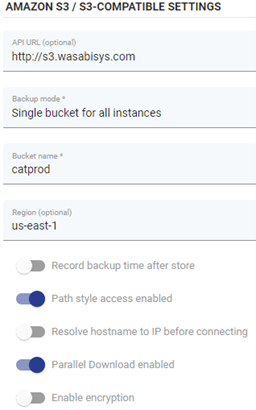
5. Input the Access key and Secret key and then click “Save” to save the configuration.

6. Test the connectivity by selecting the Wasabi destination and clicking “Test Connectivity.”
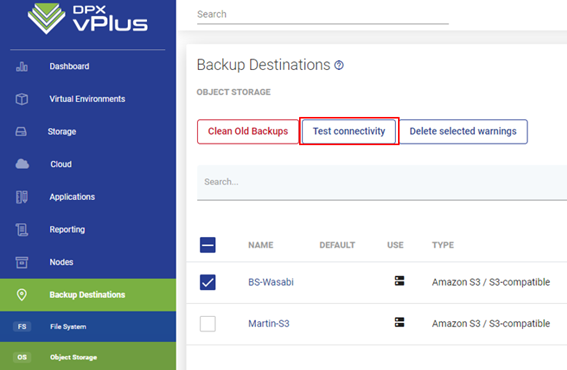
7. The results can be viewed in the Task Console.
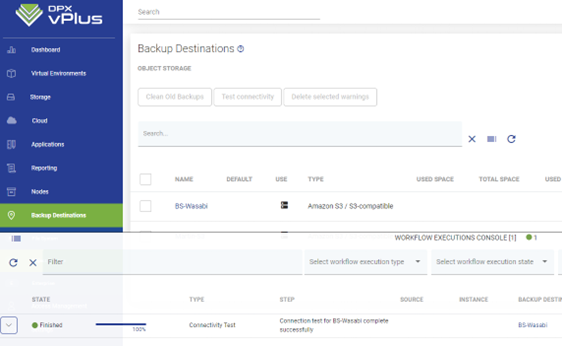
8. Click on Virtual Environments and then Backup SLA’s to create a Backup SLA and protect your Virtual Environments, Containers, Microsoft 365 and Applications using Wasabi backup storage. Configure the settings under “General” tab.
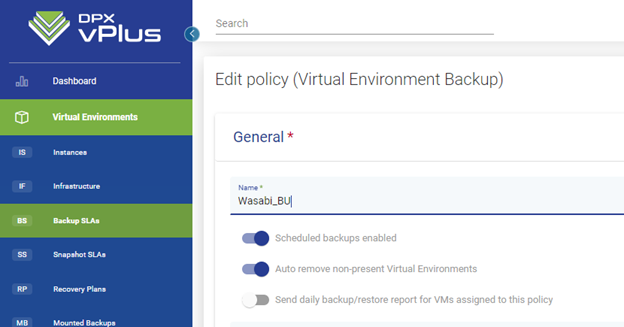
9. Configure Settings under the Rule tab. Select the Wasabi cloud storage as the destination, define the retention settings, and assign the policy to a schedule. If you have not yet created a schedule, you can assign this policy to a schedule at a later time.
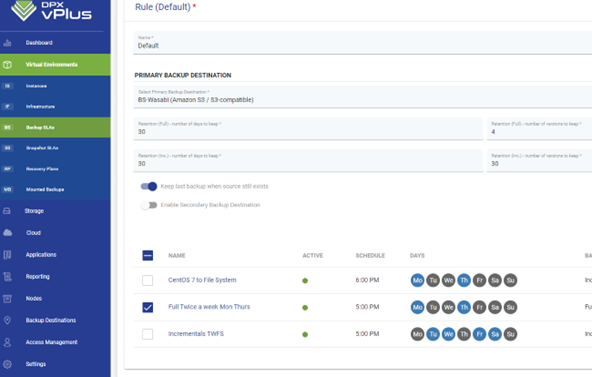
10. If you do not assign the policy to Virtual Machines during creation or want to assign new VMs to an existing Backup Policy, you can do so by clicking on “Virtual Environments” and then “instances.” Select the instance and click “Assign policy” and then select the policy created in step 4.8 above. Click “Save” to save the policy assignment.
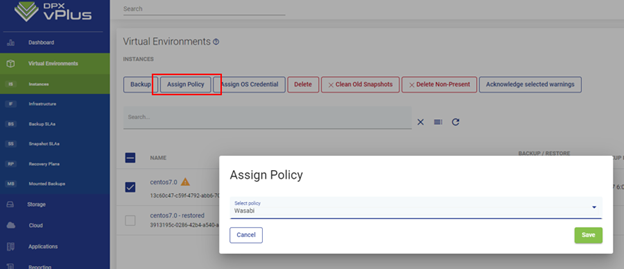
11. Start a backup by selecting the instance and clicking the backup icon.

12. The progress of the backup can be viewed on the task console.
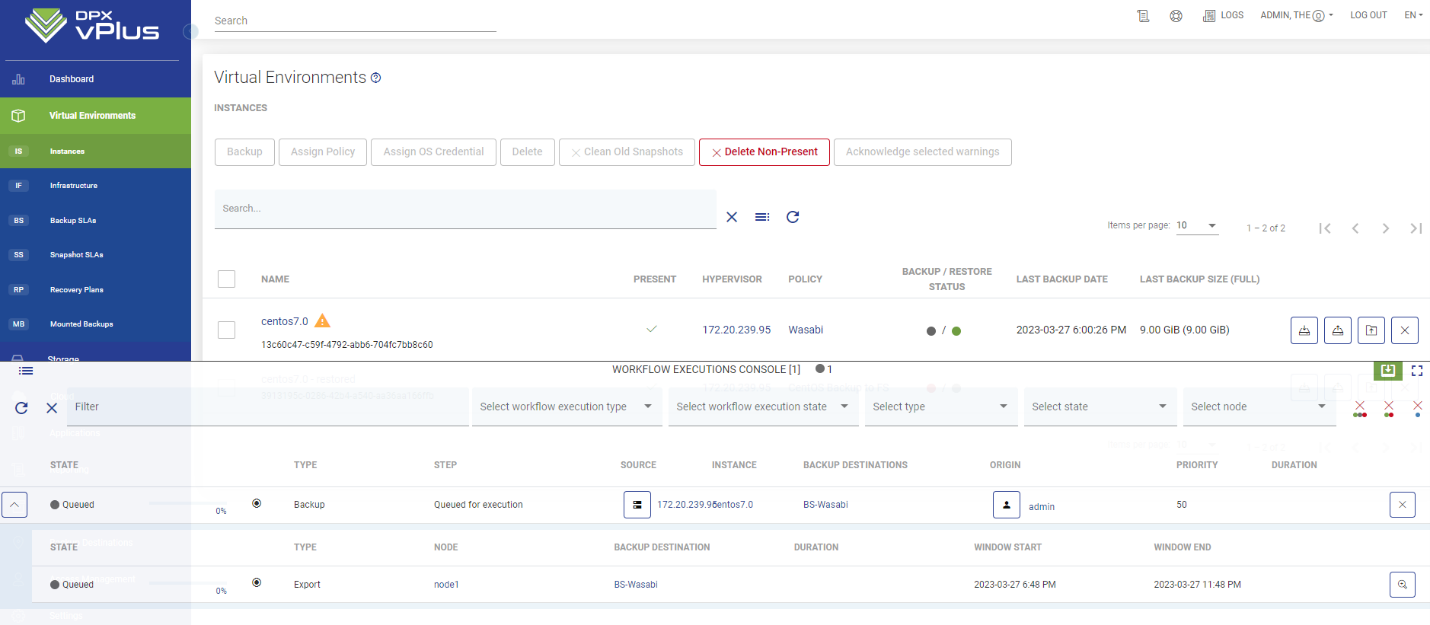
For any support or setup questions, please get in touch with Catalogic Technical Support at dpsupport@catalogicsoftware.com.

